
To the place where "good design" was created
Good design, excellent design, design that opens up the future, ideas that move people's hearts, and actions that lead society always have small beginnings.
Interviews with designers at the birthplaces of good design to find hints for the next design.
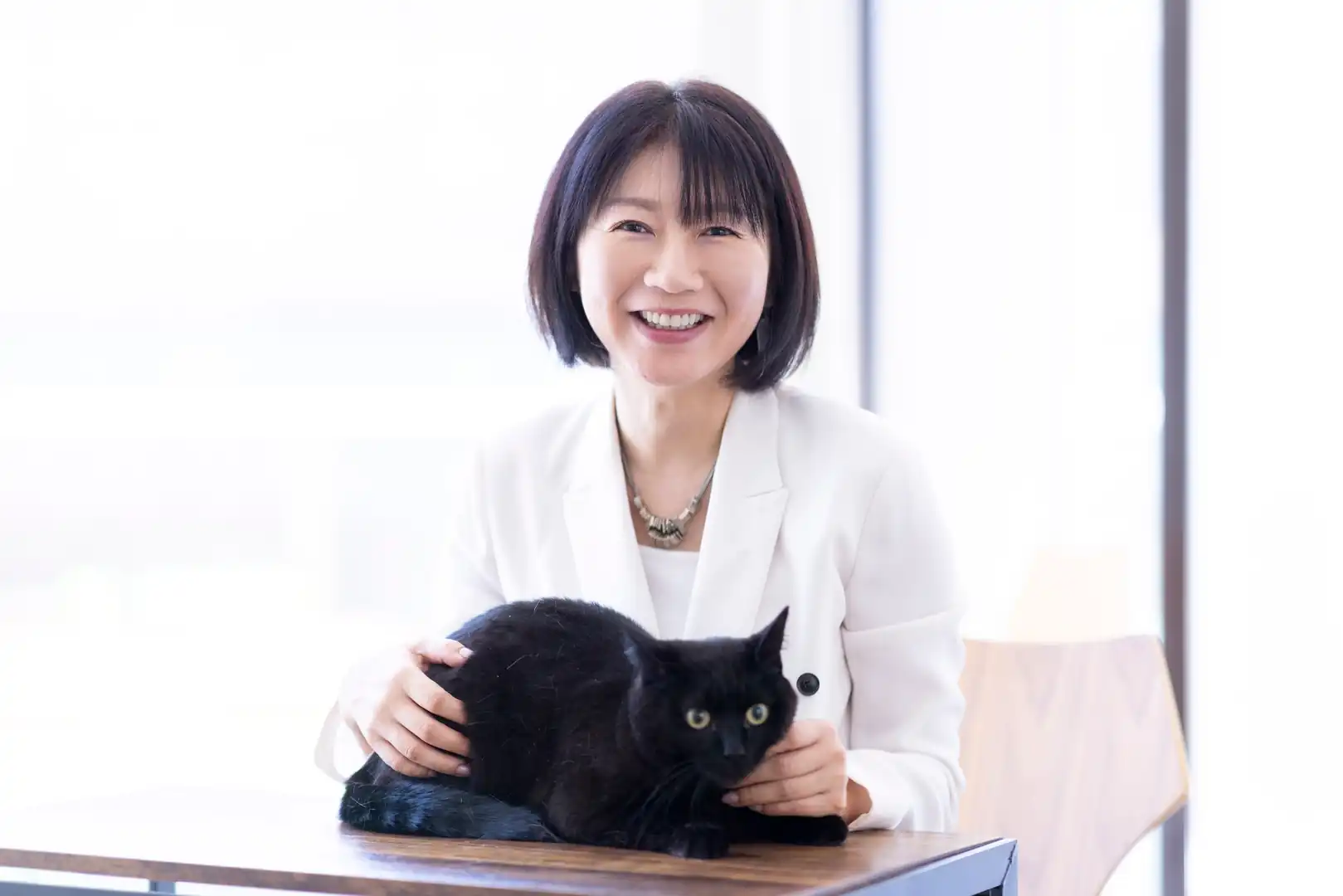
Destination
Cross Clover Japan Co., Ltd.
The cats are the designers. My role is communications. (Part 1)
2025.06.27
The relationship between cats and humans is an old one. Cats are said to have first come to live in human settlements in ancient times to catch the rats that had increased due to the start of farming. In recent years, the average lifespan of cats has increased dramatically, but at the same time, new issues have arisen. Yukako Futono turned her love of cats into a business by founding Cross Clover Japan, and develops products from the cat’s viewpoint. What kind of viewpoint is the cat’s?! She told us about her activities, which even envisage the creation of a society with cats as its starting point.
Cats are my partners, so I can give them my attention for my entire life
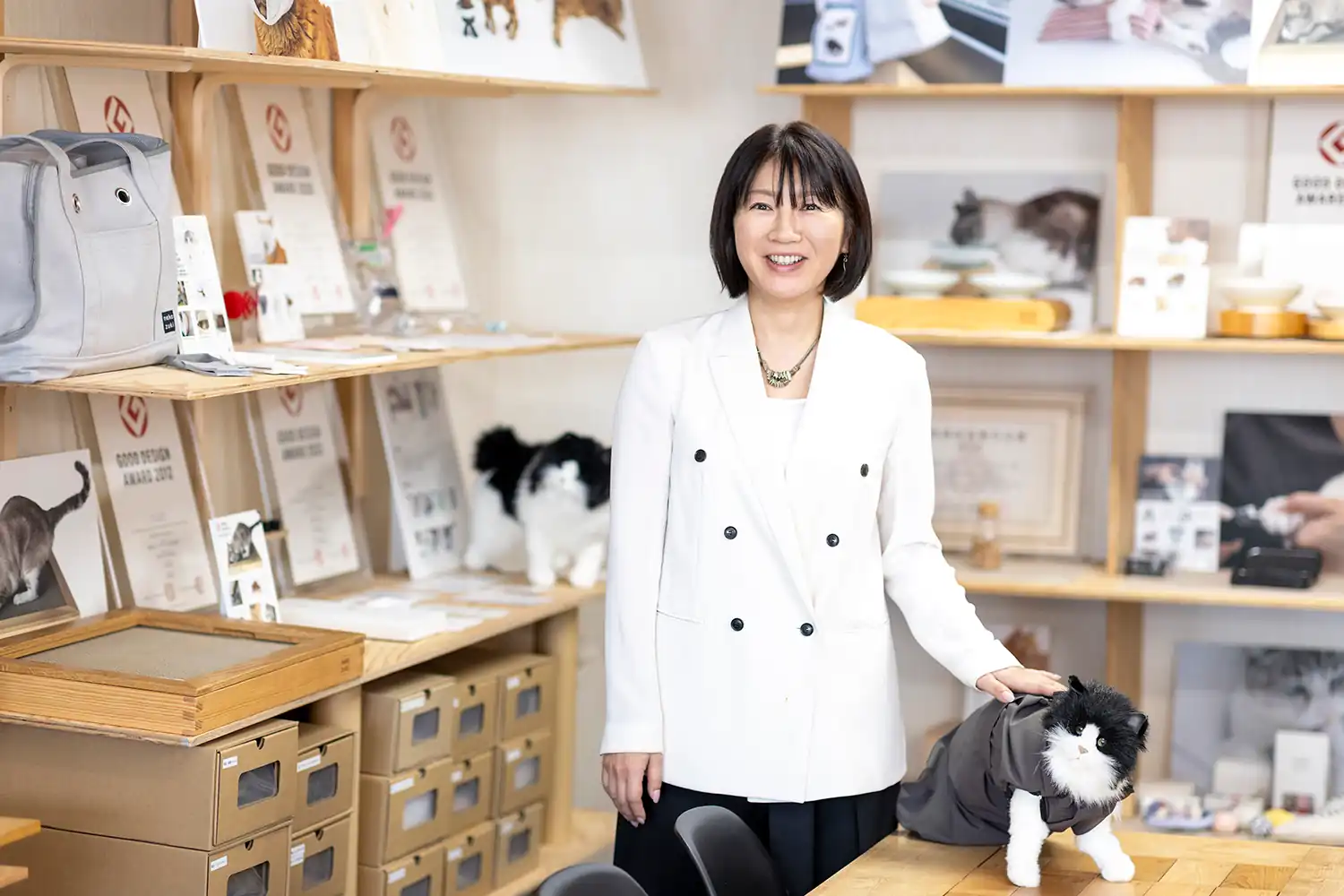
– Cross Clover Japan’s management philosophy is “We will solve cats’ problems by ‘making things seen from the cat’s viewpoint!” You also say that you’re developing a cat business because you want to make the world’s 600 million cats happy. I feel that the process of making cats happy contains hints for a society of the future that expands the circle of happiness. First of all, please tell us what prompted you to start a cat business.
Yukako Futono (Representative Director, Cross Clover Japan) I have liked cats as far back as I can remember, and the first photo I ever took was of a cat. My life with cats began when I welcomed a kitten named Naruto at the age of 20. After that, I had volunteered at an animal shelter on my days off from working for a medical equipment manufacturer. Two shelter cats joined my family from there.
As a volunteer, I met a person whose work was supporting entrepreneurs, and he encouraged me by saying that I was suited to being a business owner. This is what prompted me to start my own business. When he said this to me, I felt like doing it, and started a company selling cat goods.
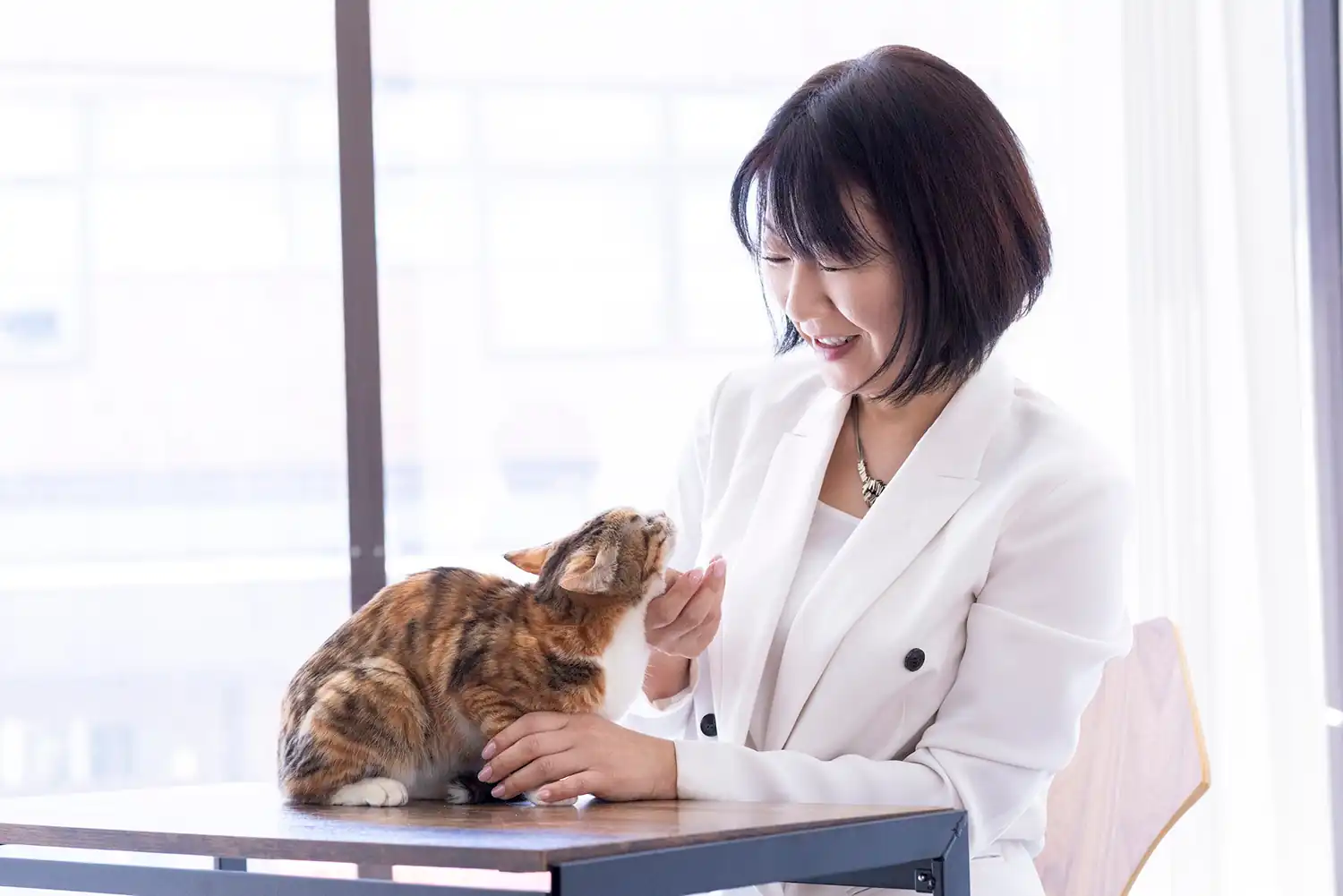
Futono For me, cats are not pets but partners, so I was confident that I could give my attention to anything related to cats for the rest of my life. That’s how I started my company with one person and three cats. This was when I was 27.
– The website of your current brand, nekozuki, introduces the “cat employees” who are essential to its development. Cats have been partners in your business ever since you launched it, haven’t they?
Futono Yes. I started a specialty store to source and sell products that cats might like. I set up a physical store in Morioka, but people didn’t come at all. Sales were poor, and there was even a period when I ran it while working part-time at a supermarket.
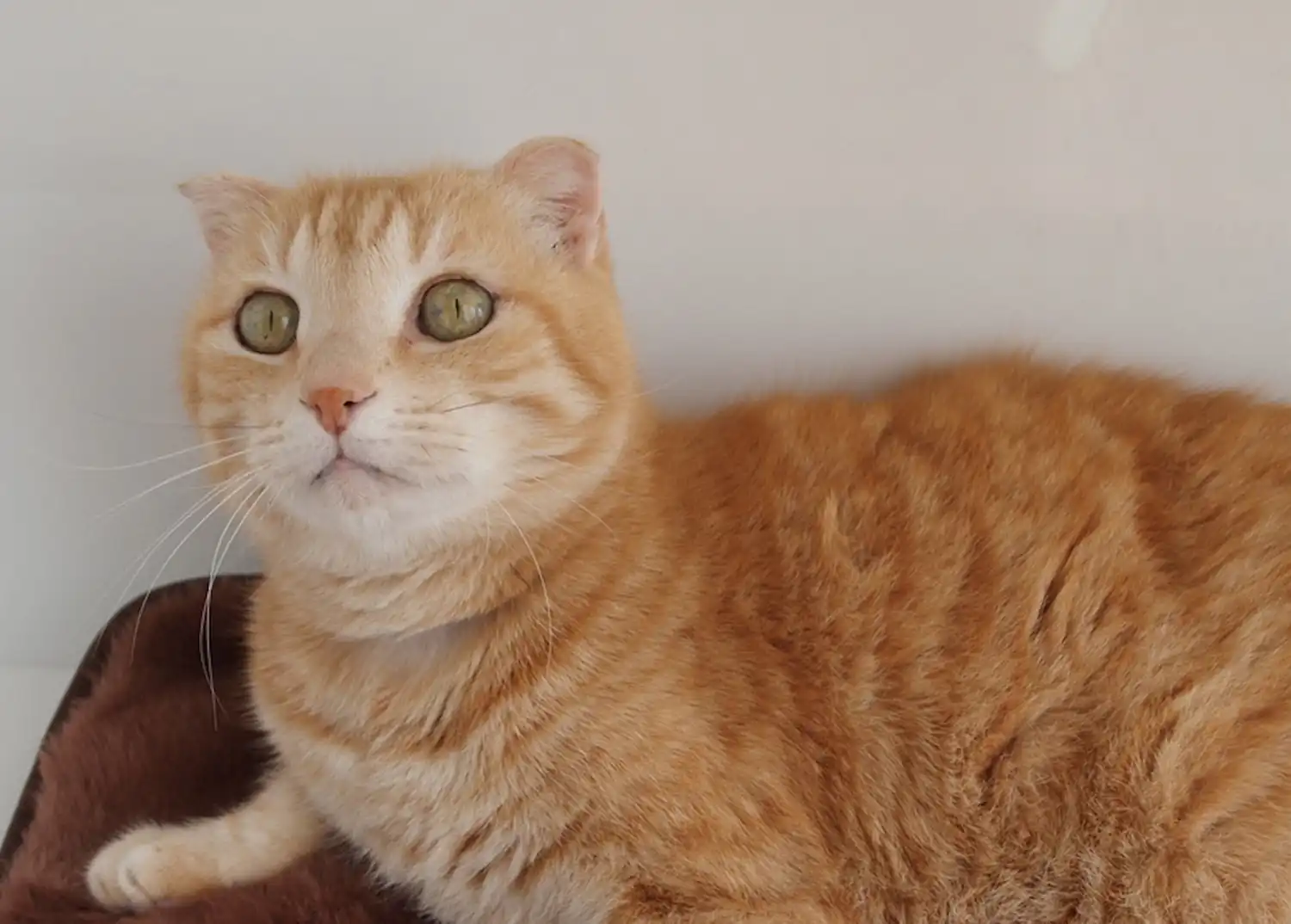
Futono After that, I learned that there was a way to sell things on the Internet and started to do so, and my customers gradually increased. This was around 2006.
Even so, I had time back then, and I was so incredibly curious about why they bought the items that I would call the buyers and ask them directly. Through these conversations, I was able to learn the reasons for their purchases and what difficulties people have in living with cats.
– What you said about being “so incredibly curious” gives me a sense of a cat’s intense gaze. You wanted to learn about various actual examples of what kinds of difficulty were faced by what kinds of cat, didn’t you?

Futono Everyone started telling me about the difficulties they were experiencing, so I replied offhandedly that I would look for products that could solve these problems; but no matter where I looked, I couldn’t find such products.
I started to feel bad saying that I couldn’t do anything even though I had taken the time to call and ask them. So I began to think that if these products didn’t exist, I should make them myself.
Futono We tend to choose pet goods solely from a human viewpoint, because they are cute. But some of the materials and shapes used are ones that cats don’t like. In fact, when I started going to exhibitions and looking at various products, I started to notice some products that were not suitable for cats’ habits and ways of life.
We even risk harming their health if the products are developed from a human viewpoint. But since that time, it’s strange the way that images of what cats need have popped into my head. It might be because I had the experience of living with my cats as a responsible owner until that point, even though I didn’t understand.
I’ve looked but the item doesn’t exist, so I’ll make it myself
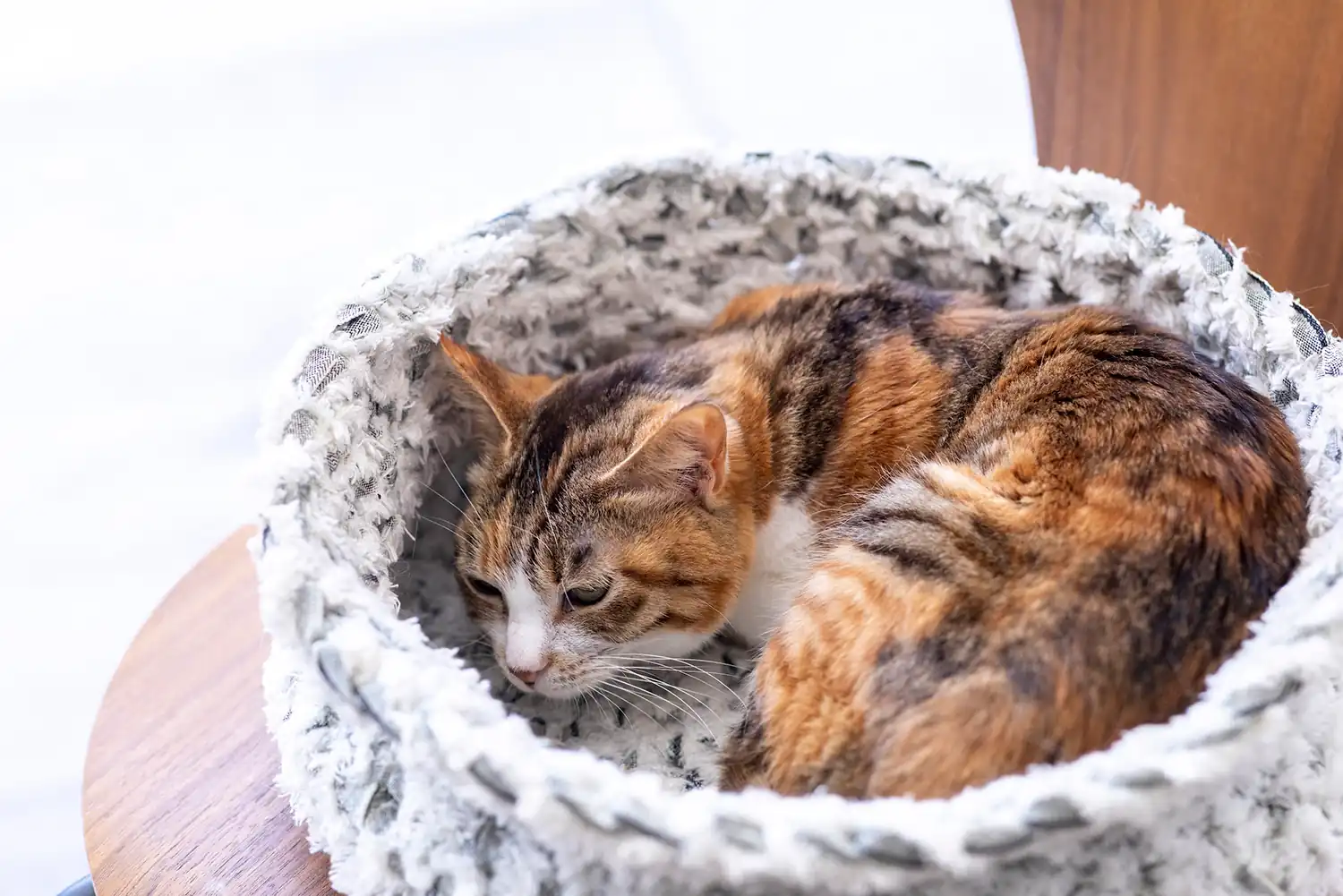
Futono Naruto developed anal cystitis in 2008 and underwent surgery. Cats have a habit of licking themselves, but their wounds can get worse when licked with their rough tongues, so they wear protective gear called an Elizabethan collar to cover their heads. But at that time, almost all the collars in the pet goods sections were for dogs; there were none for cats. That’s why I decided to make one.
– There were only Elizabethan collars for small dogs, but these were not easy to use for cats, were they?
Futono There were none for cats, at least as far as I looked for. The plastic Elizabethan collar was rigid and heavy, and it put a lot of strain on Naruto. It got in the way and he couldn’t drink water or eat by himself; it got stuck or bumped into things when he went to the toilet. He became more and more apathetic. I was overwhelmed with worry about his loss of energy due to the protective gear, even more than about his recovery from the illness.
– People tend to think that the inconvenience of wearing protective gear can’t be helped, but you decided to improve it, didn’t you? But wasn’t it hard to come up with something and make it from scratch?
Futono Dogs have long muzzles, so Elizabethan collar for dogs are too long for a cat’s face. Naruto struggled with the rigidity and weight, so I decided to make a prototype that was instead light and flexible, and the right size for cats.
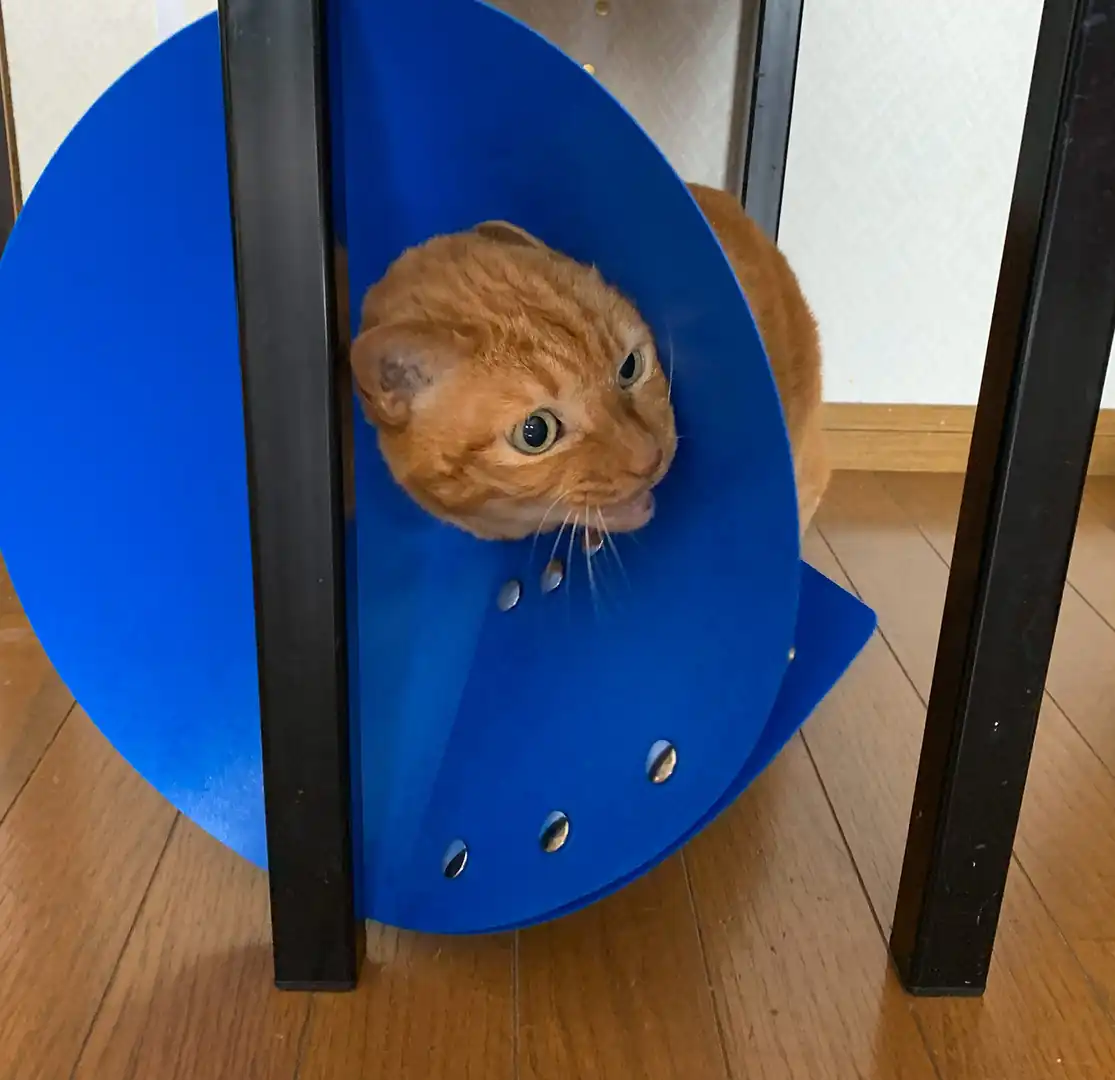
Futono I actually made a human-sized version of the Elizabethan collar, too. I put it on myself and got down on all fours to try using it. With rigid materials, collars get stuck in a lot of places, and cats can’t get into the tight spaces which they like. So I decided to use a soft material.
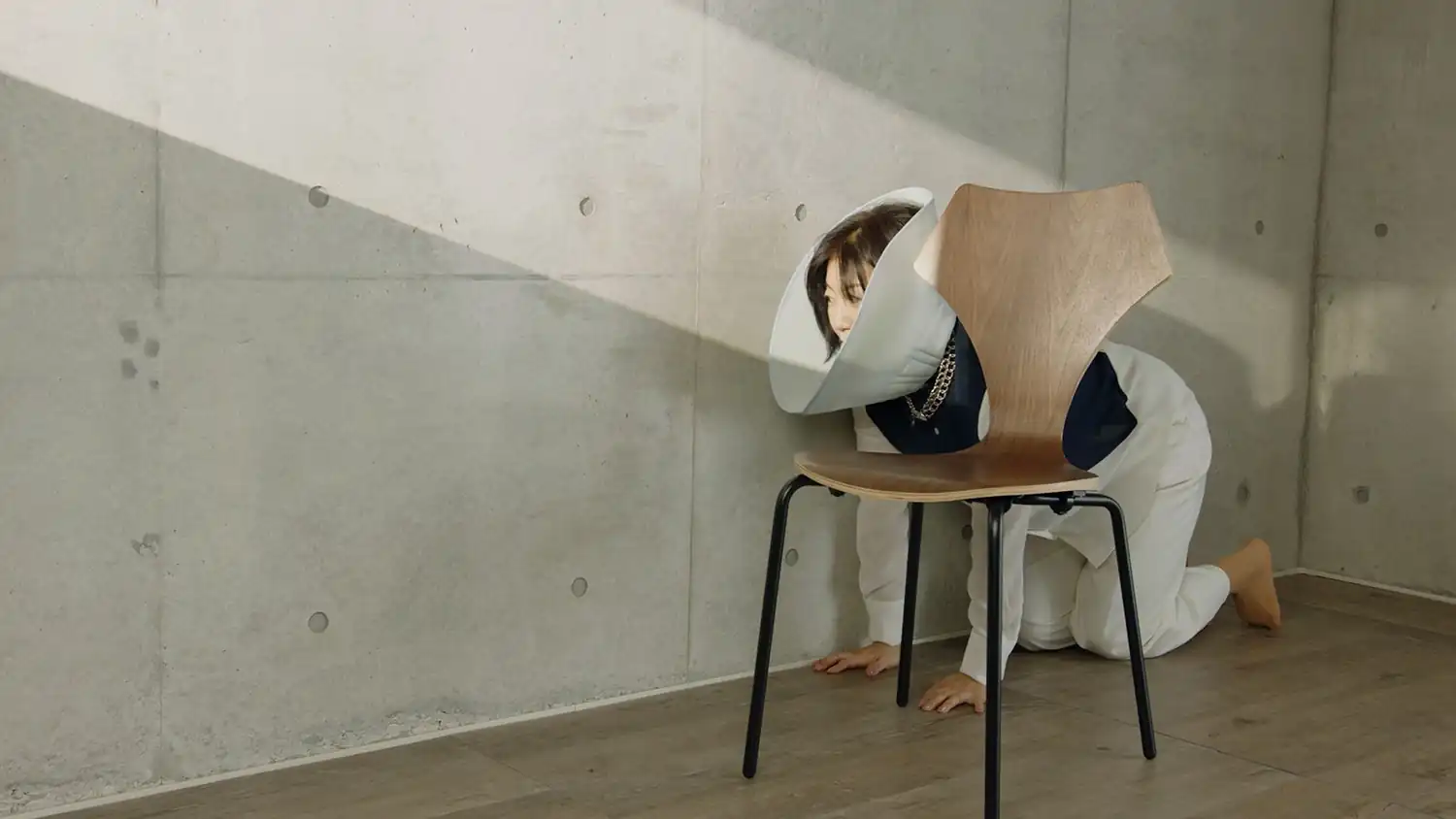
Futono I wonder how many prototypes I made... I made prototypes, tested them on cats, and revised them over and over... I think I made more than 100. I kept searching for just the right balance, and finally came up with the basic shape.
I gave this Elizabethan collar for cats the name “Feather Collar,” and put it on sale in October 2011. At first, I made only one item as a one-size-fits-all, but I have continued to improve it even after it was done. The range has grown to include collars for larger and smaller cats, and now we offer as many as seven sizes.
Don’t rush – taking time to observe and make corrections is essential
– Didn’t it take rather a long time before the first one was ready?
Futono Cats are temperamental, aren’t they? Depending on how they feel that day, they may react differently than you expected. For this reason, I have to make an overall decision while watching the situation for a few days, and this inevitably takes a long time. There were many times when it looked uncomfortable after all, and so I decided to fix a particular point; I made corrections over and over.
In the end, it wasn’t ready in time for when Naruto needed it: it took a year and a half to two years to complete. Many pet owners want to reduce the strain on their cats in any way possible, so they tell us that they want the perfect size. Now, we also make items which fit the cat perfectly in a kind of made-to-measure format.
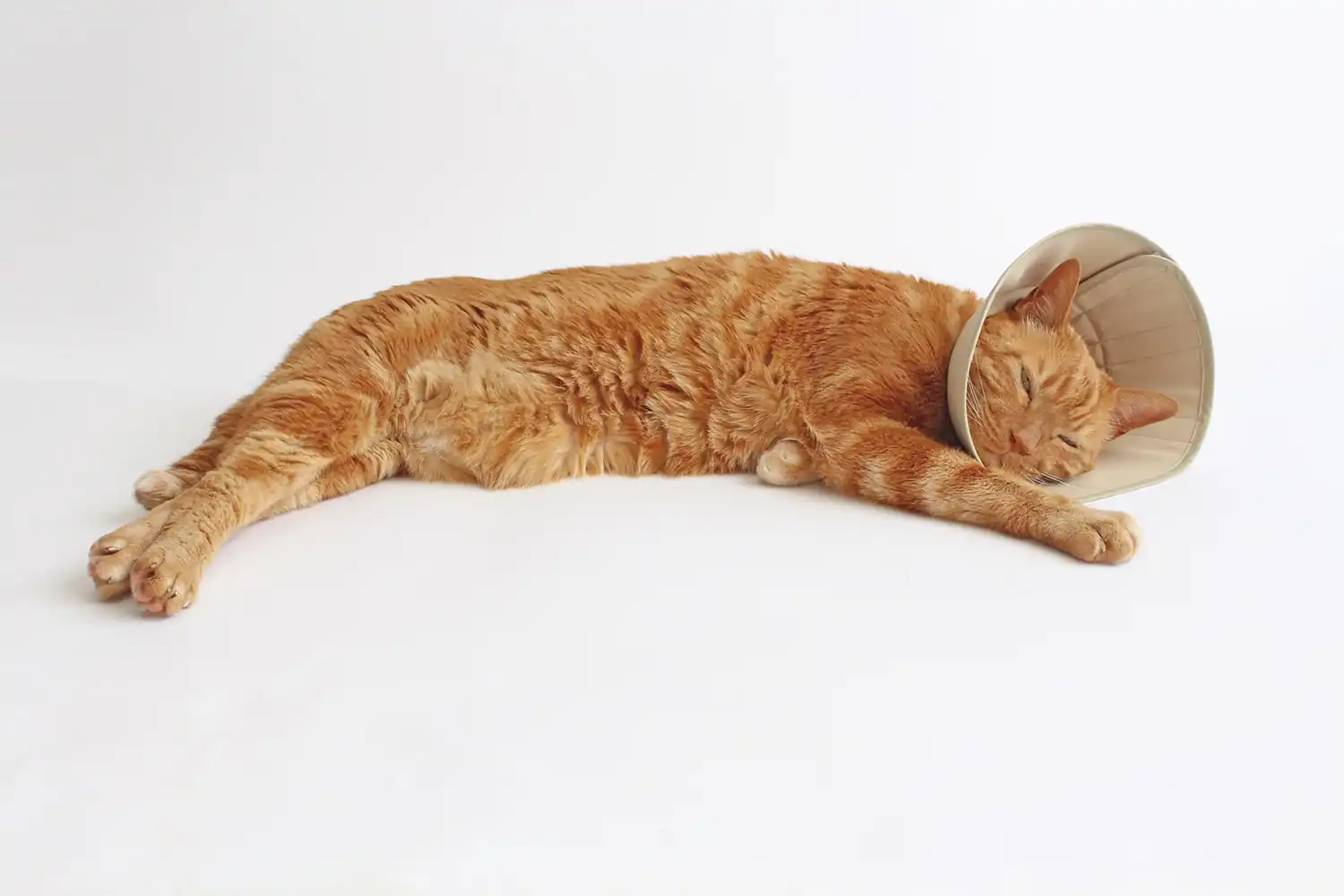
– You judge how the cats feel about the products by observing them closely in daily life. This is the cat’s viewpoint which is essential for product development, right?
Futono This Feather Collar was the product that became the origin of manufacturing from a cat’s viewpoint. When I make a prototype, I always wonder how I would feel about it if I were a cat. Cats don’t need cute paw marks; they don’t need strong smells; they won’t be able to relax with bells jingling on their collars... This is how I think.
– There used to often be bells attached to the collars of domestic cats.
Futono It was convenient for the owners to know where the cats were; but if I were a cat, I thought that I would hate to have a bell jingling when I wanted to be alone.
The cats are the designers
Futono If you look at it from a cat’s viewpoint in this way, more things will start to bother you, one after another. When cats wear Elizabethan collars, it becomes hard for them to eat, and they spill their food. So I thought that if there was a bowl that was easy to eat from even when wearing an Elizabethan collar, it would obviously be easier for healthy cats to eat from, too, and I developed a high bowl with an angle that made it easy to eat from.
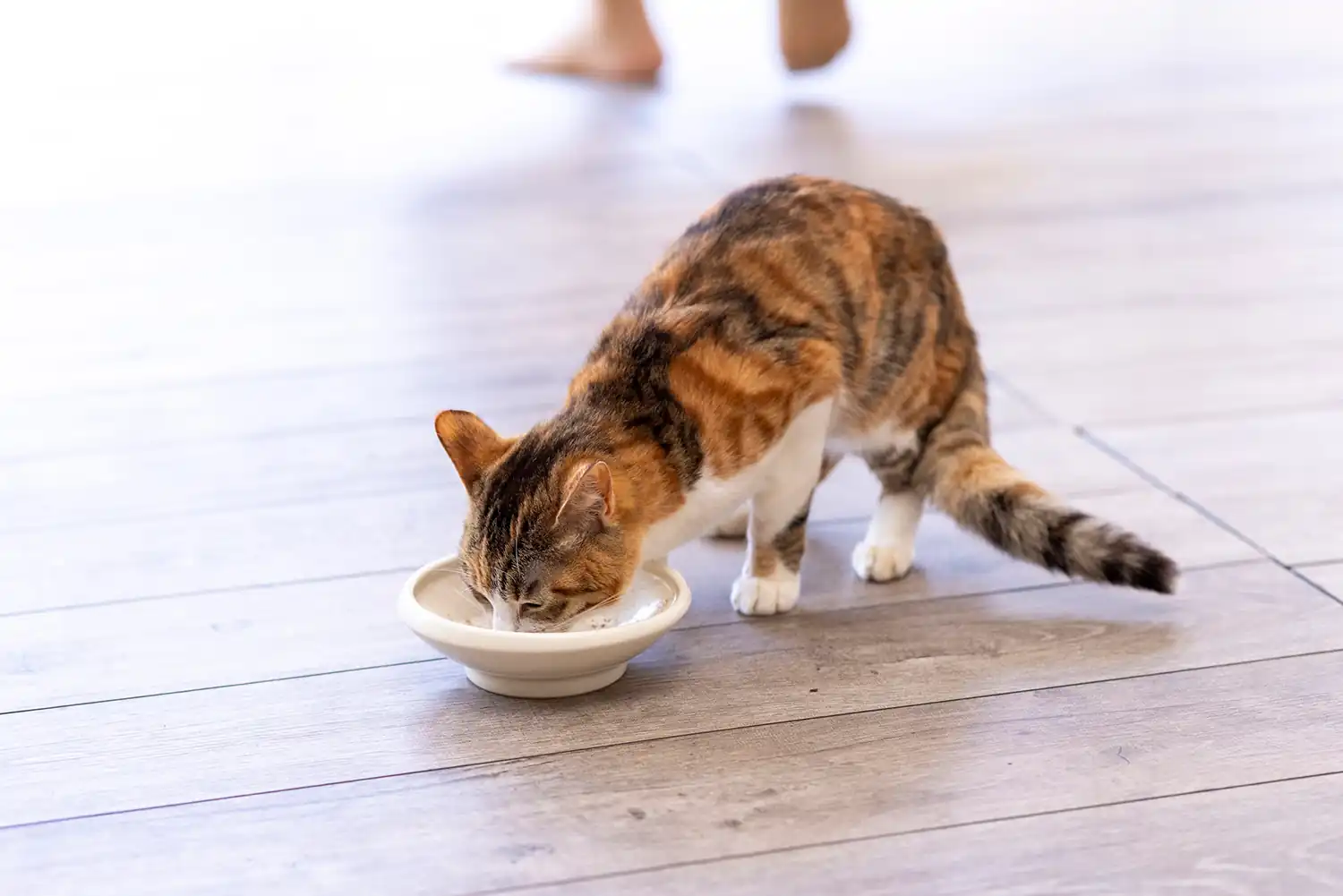
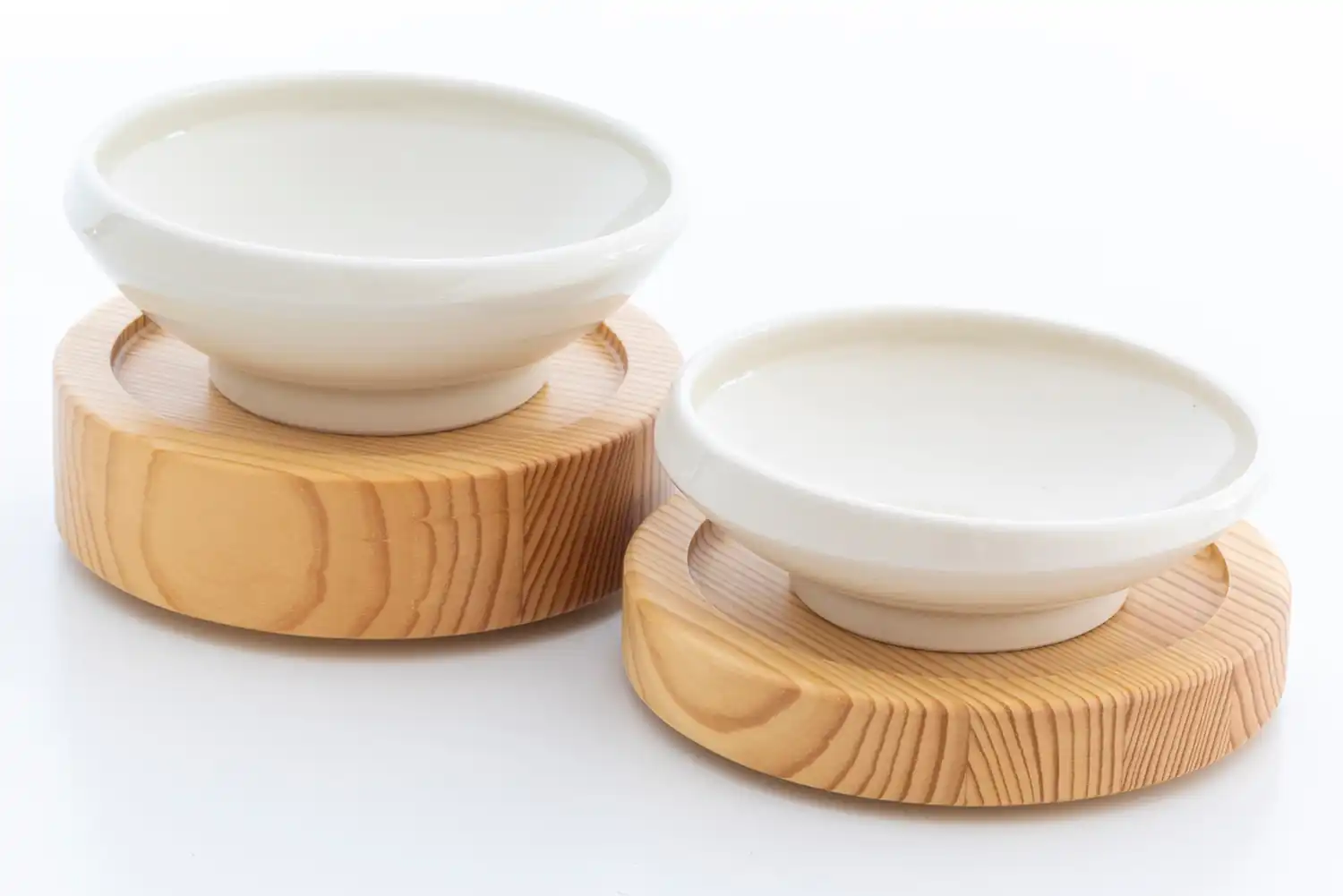
– The “Feather Collar” became a hit, with more than 60,000 items sold mainly through word of mouth. Do you carry out this kind of product development by yourself, acting as the product designer?
Futono Yes. Having said that, though, the cats are the actual designers here, and my role is just to communicate that to humans. We begin developing one or two new items each year, so we are always developing something or other in parallel. Quite a few items take a long time: the “Swaddle for Cat Lovers” cat retaining bag that supports giving hypodermic drip infusion to sick cats (2024 GOOD DESIGN AWARD winner) took six years.
Addressing the problem of cat aging
Futono Over the past few decades, cats in Japan have been living longer thanks to the spread of indoor breeding and medical advances. In 1990, the average lifespan of a cat was 5.1 years, but by 2022 it had risen to 15.66 years (according to research by the Japan Pet Food Association). 15.66 years old is 80 years old converted into human terms. It means that they are aging.
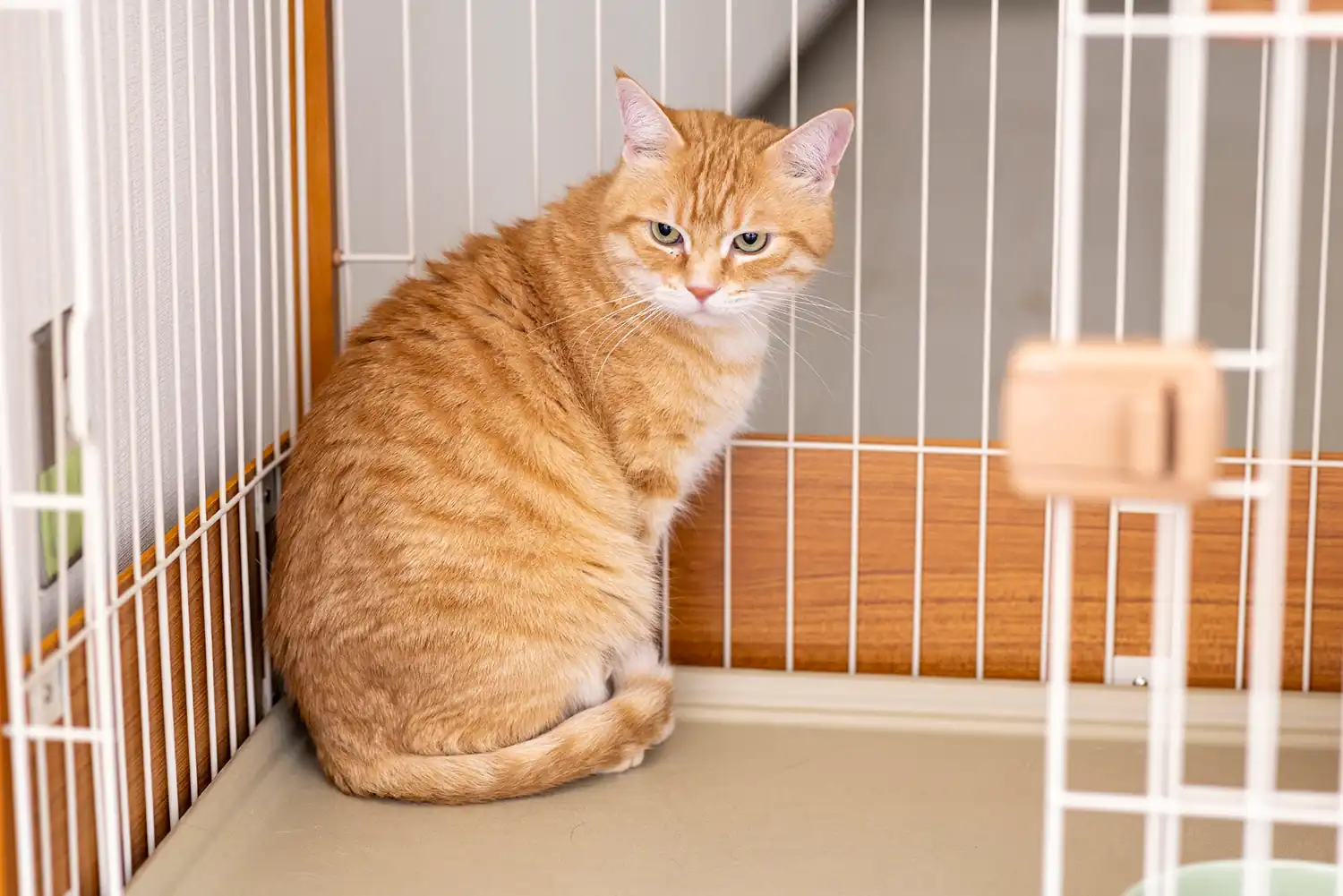
– As cats age, the worry is illness. Cats’ ancestors were born in the desert, and I’ve heard that while they have become able to live on little water, their urine is high in toxins, which puts a strain on their kidneys.
Futono Cats have a one in two risk of kidney failure at the age of seven. It’s not like humans, who get kidney disease from eating too much salt; even if you pay attention to their diet, their kidney numbers get worse as they get older. Therefore, they require regular hypodermic drips in quite a few cases, and there are many owners who use hypodermic drips at home to reduce the strain of going to a clinic.
But cats move around all over the place. It’s difficult for an owner who lives alone to administer a drip while holding a cat for many minutes. Therefore, we created an aid to retain (hold) the cat so that it stays still, without moving around, and it is easy to carry out the task even alone.
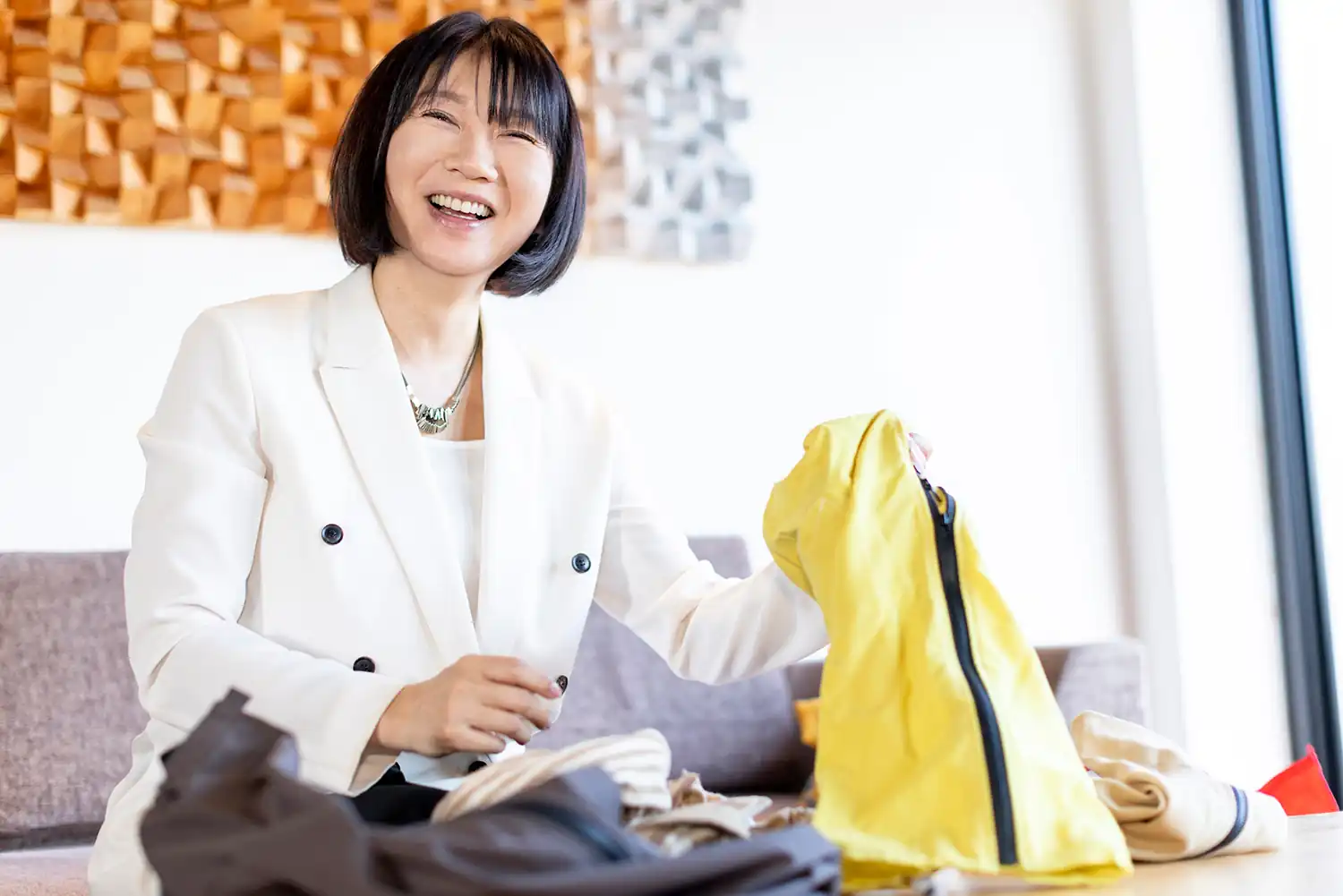
– The development was not straightforward: it took six years to complete.
Futono First of all, you can’t force cats to do anything. I really wanted to check them while they wore it for several hours, but they seemed to be getting tired of it, so I decided to give up and try another day... The days passed like this.
Hypodermic drips are something cats dislike in the first place, and on top of that, we’re making them wear a swaddle which holds them still. There were many times when I thought that the cat’s face showed that they did not like it, and that I was heading in the wrong direction – it was a succession of trial and error like this.
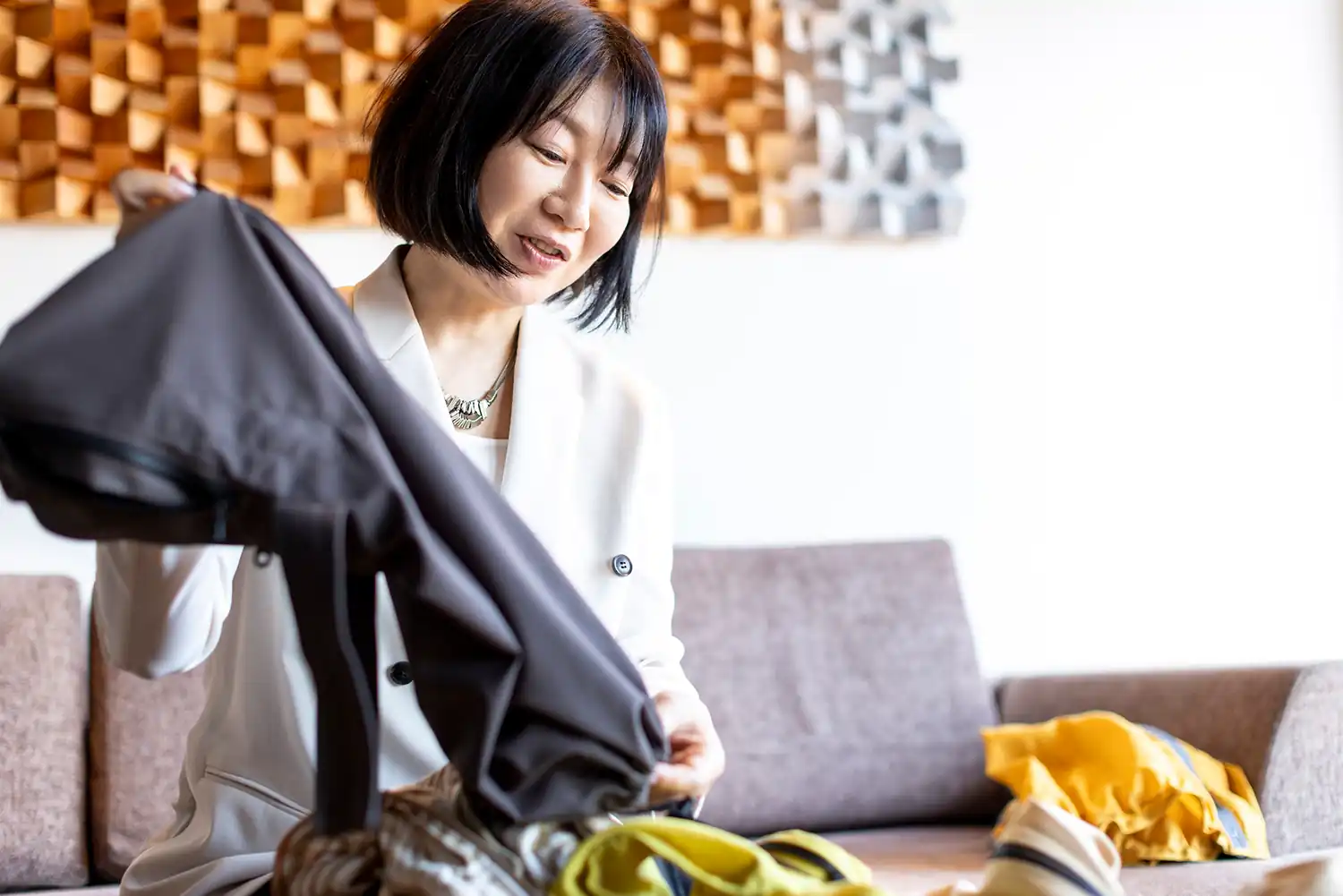
Futono One day, I miscommunicated the instructions to the craftsman making it, and a prototype from which the front legs stuck out arrived. When I tried it out, the cat was very calm. Until then, I had been making bag-like prototypes which wrapped the cat from the neck downwards, but I realized that cats seemed to have a tendency to calm down when their front paws were on the floor. They probably don’t want to be in a situation where they couldn’t escape if attacked by an enemy.
– That was a major discovery, wasn’t it? Unlike dogs and cows, cats are not fully domesticated and retain the DNA of wildcats. We may need to look as far as their wild instincts and habits when developing products.
Futono This was even introduced as a new finding at the Japanese Society of Veterinary Science this year. After realizing this point, development progressed rapidly and I was able to complete the product.
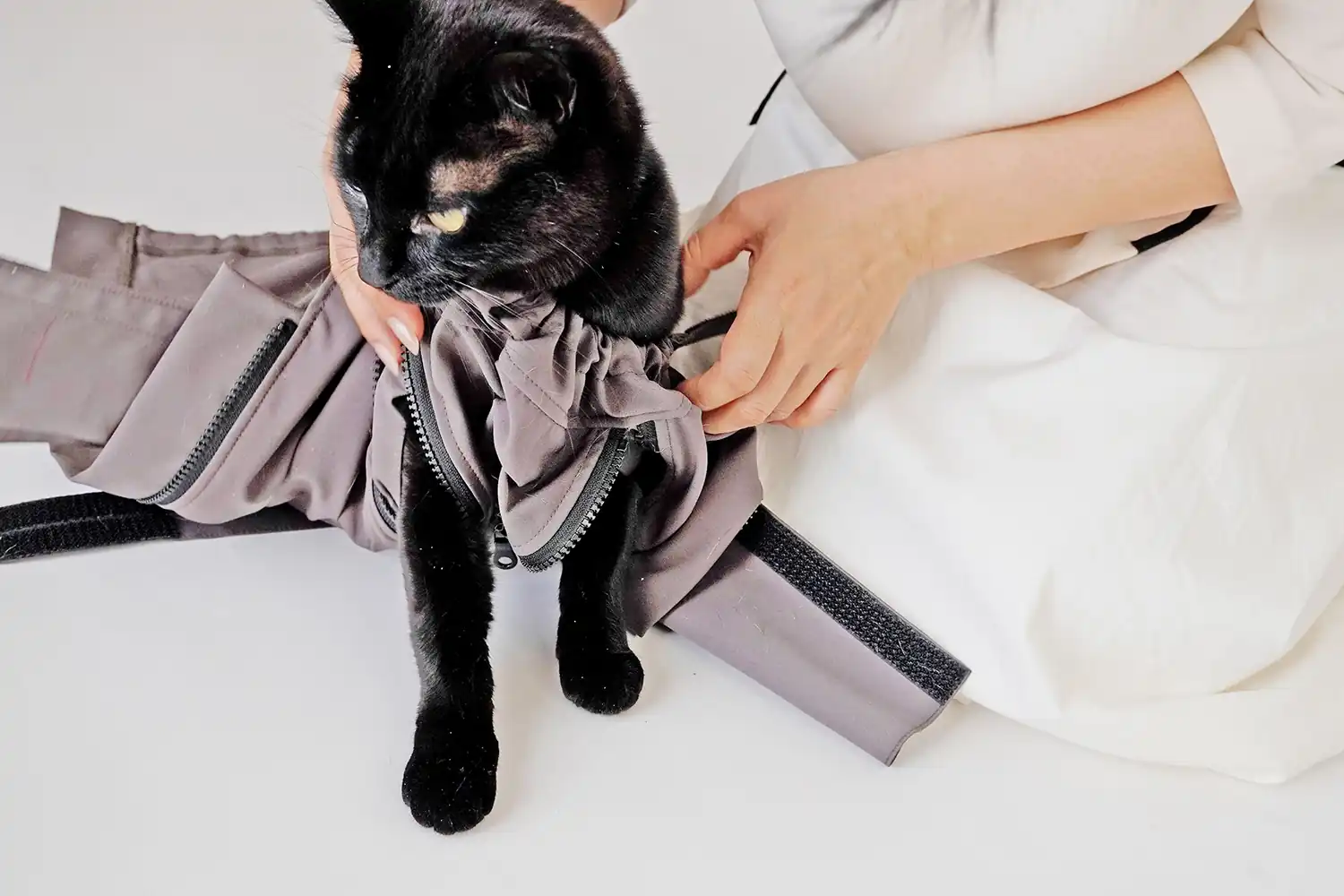
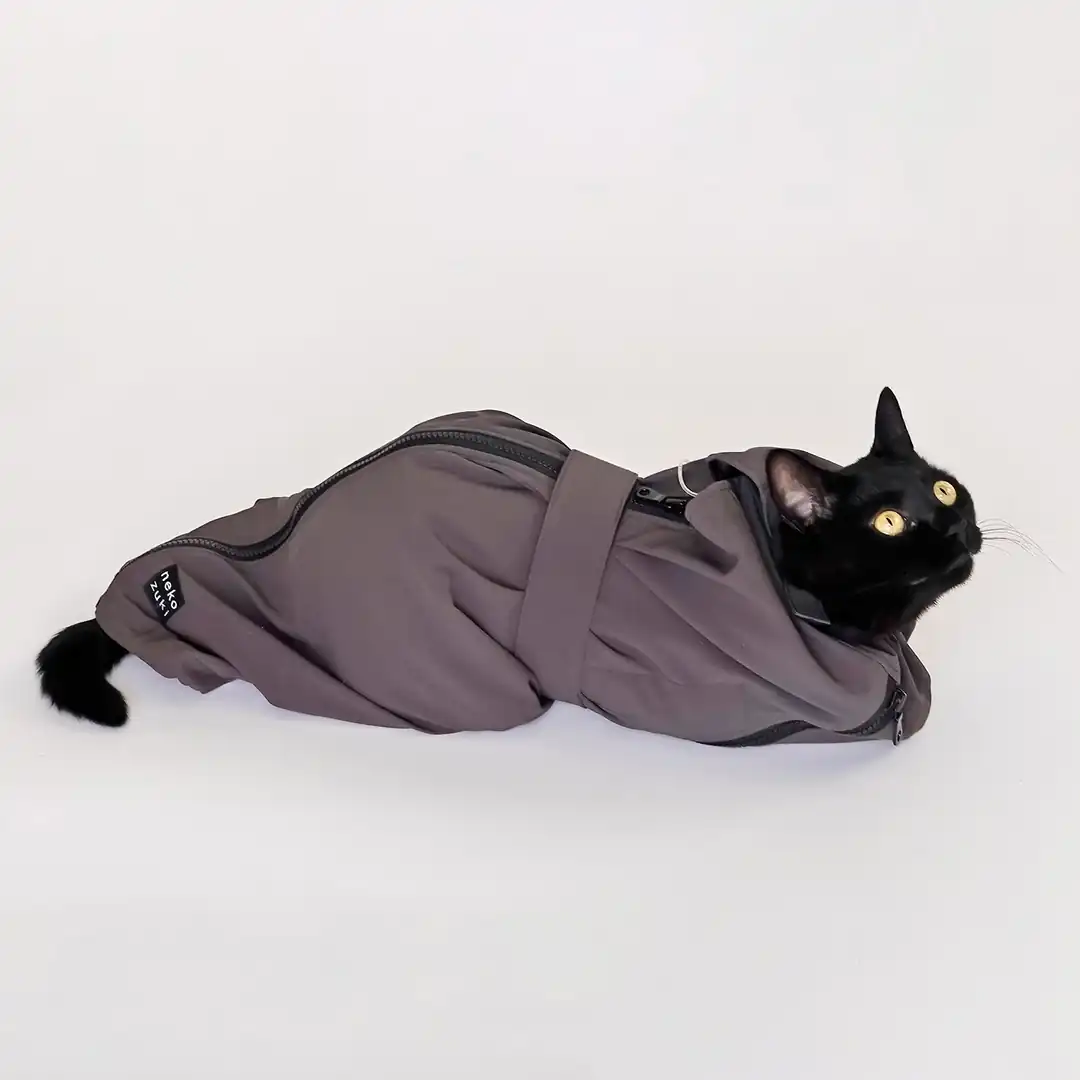
How to work with craftsmen as a fabless company
– You are a fabless company that does not have its own factory and manufactures products in small lots. Moreover, if you are going to make prototypes over and over, the collaboration with the partner companies who manufacture them becomes important. How do you communicate with them?
Futono I think it’s possible to make prototypes dozens of times because we are talking about small lots. I have dealings with more factories now, but when I first developed the Elizabethan collar, people thought I was doing it as a hobby because I was still young, in my 20s, and had no track record, and so they didn’t listen seriously to me. I contacted 30 factories to enquire, and only one company listened to what I had to say.
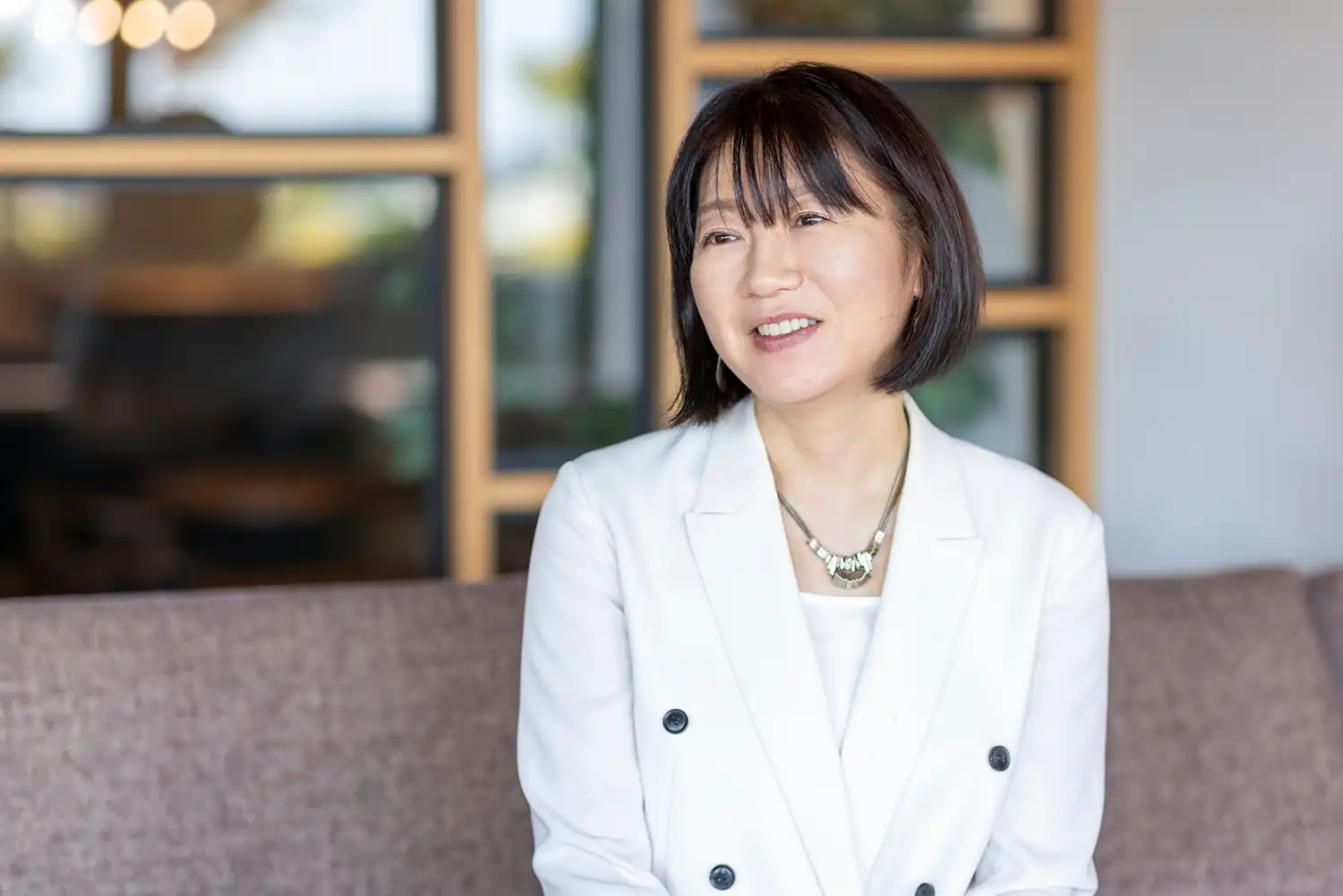
Futono When I’m testing prototypes with cats, I always take videos. As I watch them many times, I come out with opinions that this looks tough, that looks like it’s causing a strain, and I make corrections. If I repeatedly tell the craftsmen on the shop floor these things directly, as my opinions, they will get fed up. So I actually show them the video and tell them, “Here’s what the cat says.” A picture is worth a thousand words, and so they respond with “Mmm, I see.”
– That’s how you share the cat’s viewpoint with the factory manufacturing the items...
Futono Even having said this, I know that I’m asking them to do the impossible, so every time I get a call, I’m nervous that they’ll tell me they’re not going to do it anymore (laughs).
– You have developed a wide range of products, from Elizabethan collars to bowls, cat sand, swaddles, nail clippers, and cat food. How do you look for plants to manufacture them?
Futono In the same way that I called customers directly when I started this work, when I find a manufacturing plant with a skilled craftsman, I call them directly and ask if they could make a product like this.
– It’s like walk-in sales, isn’t it? Didn’t you feel hesitant because they might turn you down?
Futono Maybe from my experience working in sales at my previous job, I take rejections for granted because I have a spirit of throwing caution to the wind. I approach it with the attitude that even if I am rejected by many companies, I have not been rejected by all the factories in Japan, so it’s fine.
– Without this passion and tenacity, the cat’s viewpoint would surely not have become a reality. Futono has won a GOOD DESIGN AWARD seven times so far. In Part Two, we ask her to talk about winning the award, and her outlook for the future.
In GOOD DESIGN TANBOU (= exploring), we will deliver interviews and introduce works based on a certain subject. This time, the theme is “future welfare.” Welfare means “happiness” and “abundance.” They desire to make future society better. What did they overcome toward achieving this goal? We will explore where their design focusing on the future started from.
amma BOWL
CROSS CLOVER JAPAN Co.,Ltd.
Dishes for disabled cats, such as those fighting disease, who require nursing care. By making the front low and the bowl a sloping shape, it is easy for cats to put their faces into it, and they can eat with minimum strain. The food does not easily spill because of the inward-turned edge. The design concept is the owner’s gentle pair of hands that support the dish while tilting it slightly. The design was praised for its straightforwardness and sincerity in observing cat behavior and solving a problem.
- Award details
- Details of award won 2015 GOOD DESIGN AWARD https://www.g-mark.org/en/gallery/winners/9dc1c0d7-803d-11ed-af7e-0242ac130002
- Producer Director
- Yukako Futono, Cross Clover Japan Co., Ltd.
- Designer
- Yukako Futono, Cross Clover Japan Co., Ltd./ chakun, ponchan, nekozuki. + Kazuyoshi Oosawa, Tourai.
Mamma DAI separate
CROSS CLOVER JAPAN Co.,Ltd.
Older pets are more likely to regurgitate when they eat with their heads down. This stand for dishes is intended to solve this problem, and was highly evaluated for its authentic design using locally grown timber in a market where there are few products with a high design quality. The height of the stand can easily be changed by stacking. It is waterproof and can be cleaned simply by wiping. It uses no nails, and there are no corners. Attention was paid to preventing injuries if cats bumped into it, and it was made more durable.
- Award details
- Details of award won 2019 GOOD DESIGN AWARD https://www.g-mark.org/en/gallery/winners/9e0601be-803d-11ed-af7e-0242ac130002
- Producer Director
- Yukako Futono, Cross Clover Japan Co., Ltd.
- Designer
- Chakun, Ponchan, nekozuki./ Yukako Futono, CROSS CLOVER JAPAN Co., Ltd.
Swaddle for cat lovers
CROSS CLOVER JAPAN Co.,Ltd.
A retaining bag that supports the administration of drips at home to cats with illnesses such as kidney disease, which are increasing due to cat aging. With allowing a single person to hold a cat securely and reducing the cat’s stress as its main objectives, the product thoroughly considers ways to reduce the burden on both the owner and the cat. The material is easy to wash and so it is simple to maintain. It has a well-balanced design that meets the needs of each party.
- Award details
- Details of award won 2024 GOOD DESIGN AWARD https://www.g-mark.org/en/gallery/winners/21650
- Producer Director
- Yukako Futono, Cross Clover Japan Co., Ltd.
- Designer
- Chakun, Ankochan, nekozuki./ Yukako Futono, CROSS CLOVER JAPAN Co., Ltd.
Tomoko Ishiguro
Editor/writer
After working in the editorial department of “AXIS,” she became a freelancer. She writes, edits, and plans, with a focus on design and life culture. Her major editorial works include LIXIL BOOKLET series (book, LIXIL Publishing) and “Oishisa no Kagaku” (magazine, NTS Publishing).
Kazushi Abe
Photographer
After graduating from a vocational college in natural and environmental sciences, he worked at an advertising studio in Daikanyama. He returned to his hometown and worked as a photographer for a printing company, then set up independently in 2006. He is active across advertising as a whole and a variety of other genres, with a focus on food, architecture, landscapes, and people.
Related Articles
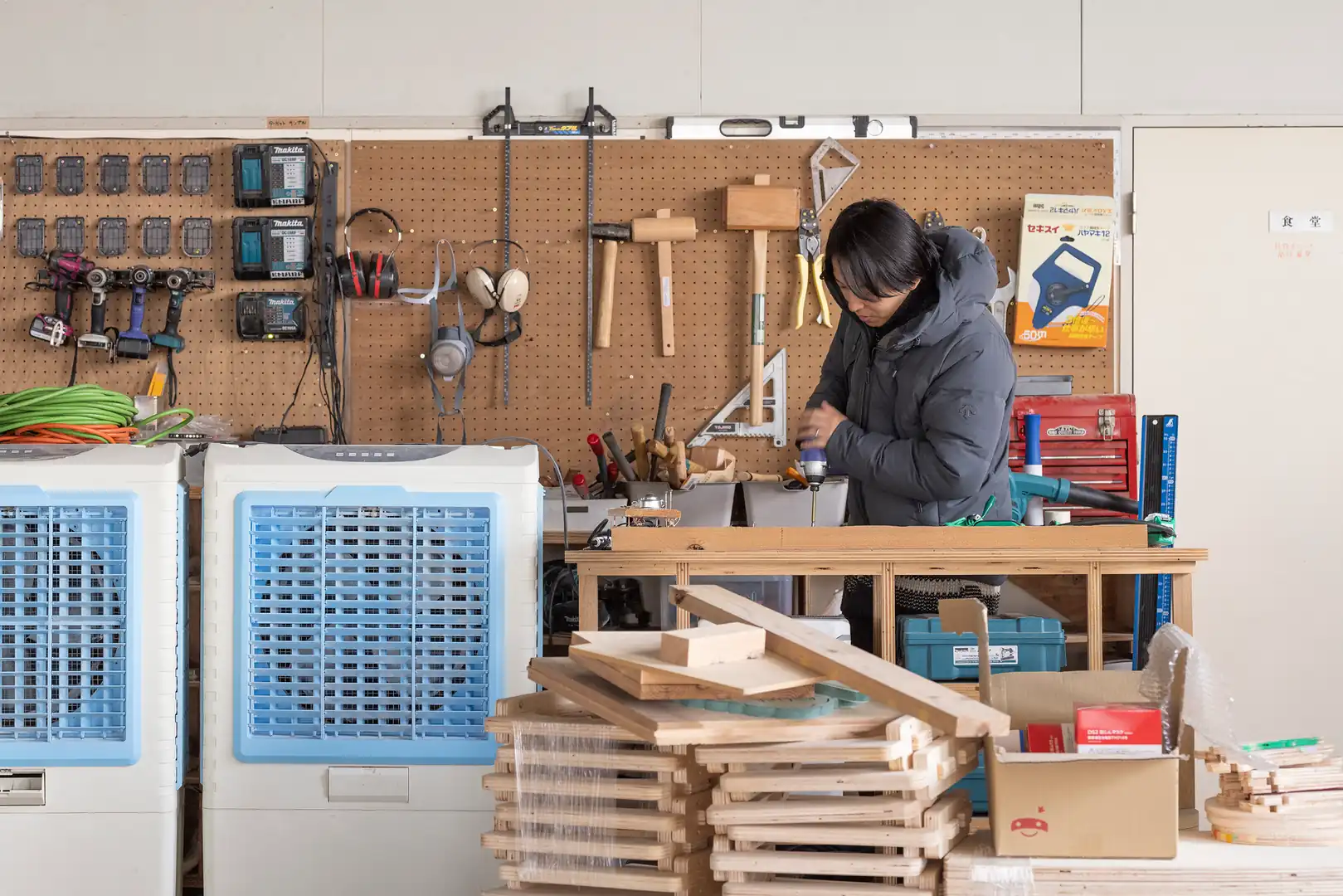
Transforming the World of Architecture through Digital Fabrication (Part 2)
Digital fabrication draws fully upon digital technologies to make innovative creations. The architectural group VUILD was selected for a GOOD DESIGN GOLD AWARD in 2020 for its House for Marebito, constructed by meticulously cutting wood using digital fabrication and assembling the pieces like a plastic model kit. The group’s founder, Koki Akiyoshi, is pursuing the democratization of architecture and continues to boldly implement this principle in order to bring about a society in which anyone can become a maker. This is also an innovation that seeks to change society.
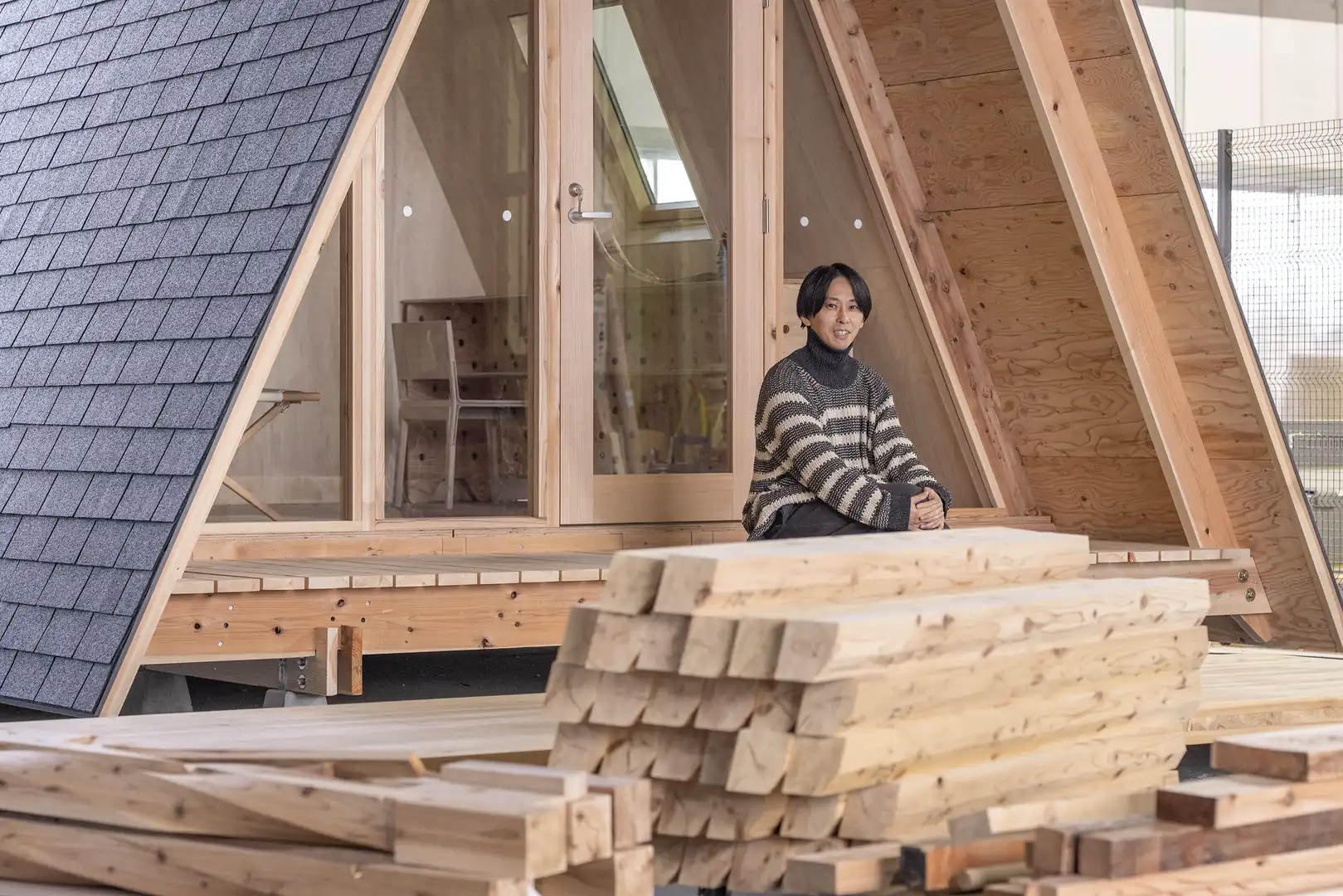
Transforming the World of Architecture through Digital Fabrication (Part 1)
Digital fabrication is attracting attention for accelerating the pace of manufacturing. The Ministry of Internal Affairs and Communications defines digital fabrication as technology which produces creations based on digital data. There are many devices including 3D printers, 3D scanners, CNC milling machines, robotic arms, and sensors, and their expansion within the field of architecture is particularly impressive. The VUILD architectural group is producing cutting-edge examples of this. House for Marebito, an accommodation facility that was selected for the GOOD DESIGN GOLD AWARD in 2020, was an ambitious work created by meticulously cutting local wood with a digital milling machine and assembling the pieces like a plastic model kit. The company’s founder, Koki Akiyoshi, is pursuing the democratization of architecture and continues to boldly implement this principle in order to bring about a society in which anyone can become a maker. What he has in his sights is changing the Japanese construction industry. It was also an activity to propagate innovation.


